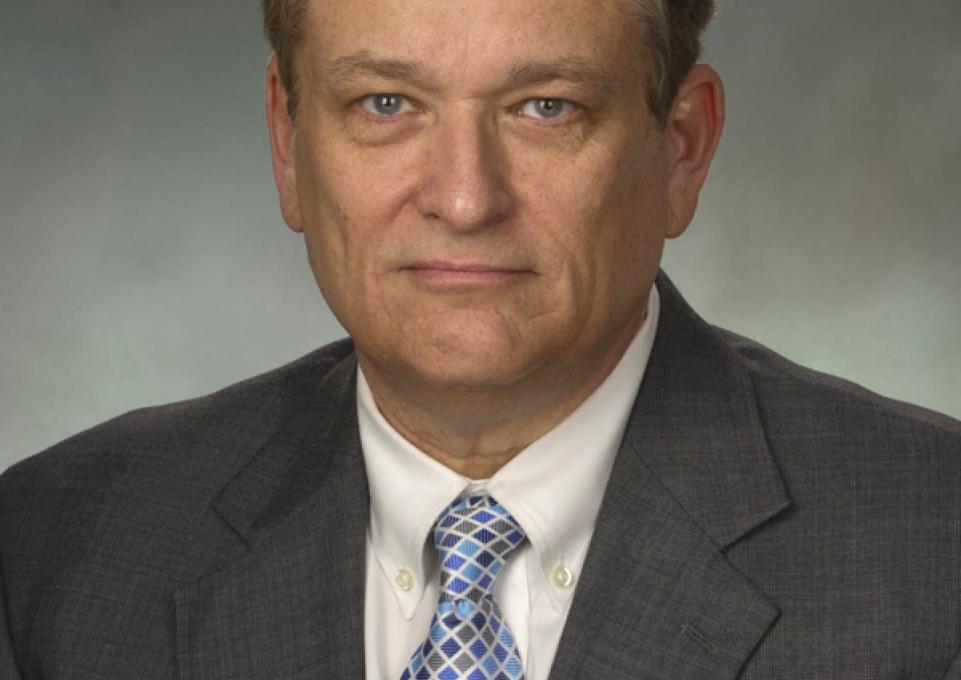
Ted Byrley, associate professor of economics and finance, compares the intricate U.S. economy to the human body.
“When it ages and something goes wrong, it affects other systems,” said Byrley, who also has worked as a chartered financial analyst for the past 26 years. “The problems tend to compound.”
Take the recession of 2001. It came after a rapid growth in technology when consumers were swooping up cell phones and other devices. The communication companies started slashing prices. Meanwhile, they stopped buying new equipment to save money.
“Thus, the manufacturers of routers and other equipment were laying off thousands of employees,” he said, “and in some cases, going out of business.”
This had a ripple effect of dampening demand for goods and services, which led to more layoffs.
The housing-marketing boom of the first part of the 21st century was followed by the crippling financial crisis of 2008. It was a perfect storm. Manufacturing jobs continued to go overseas, unemployment rose, many homeowners couldn’t pay expensive mortgages, and the housing market collapsed. He said the storm was fueled by the increased use of collateral mortgage obligations (CMO), a pool of mortgages bundled together.
CMOs are complex, Byrley said, and people who owned them didn’t always understand them. These CMOs helped encourage the issuance of subprime mortgages to borrowers who were unlikely to make good on their payments.
“We had no idea how detrimental CMOs would be,” he said. “When financial panic ensued after the housing crisis, everything got worse. Everyone started selling everything.”
While the economy seems generally strong now, there’ve been rumblings about another recession headed our way. Byrley said it’s hard to know for sure when that will be.
“Economists are notoriously poor at predicting the next recession,” he said, pointing to Irving Fisher, one of the greatest economists of the early 20th century who noted right before the 1929 market crash leading to the Great Depression that the stock market was undervalued but would make a quick comeback.
Nevertheless, Byrley points to trends, including a chart illustrating that every recession in modern history has been preceded by low unemployment. When the recession hits, unemployment skyrockets.
Also, salaries’ relationship to cost of living can point to a recession. Can workers afford to buy what they need, not to mention luxury items? This is a trend to watch.
“Yes, employment is up now, but the quality of jobs is not. There are too many low-paying or underpaying jobs,” he said. “Companies, in general, are not paying people reasonable wages, and companies no longer have loyalty to their communities and their workers.”
They still move production facilities to Mexico or elsewhere to save money.
Many factors, he said, can tip an economy into recession: federal reserve decisions, businesses’ erroneous judgments about needed inventories, and executives suddenly realizing that their industry is no longer profitable and trimming their workforce.
“Contrary to what many say, the economy can die of old age,” he said. “We are not yet in a recession. Judging by history, it’s getting closer.”
About Ted Byrley
After receiving a master’s of business administration and doctorate in financial economics and monetary theory from the University of Cincinnati, Byrley worked as Southern Ohio Bank and taught at the University of Cincinnati before joining the Buffalo State faculty in 1984. He also is a chartered financial analyst and past president of the Buffalo Society of Security Analysts. His research interests include financial economics, monetary theory, and macroeconomics. He received the SUNY Chancellor’s Award for Excellence in Teaching in 2005.
